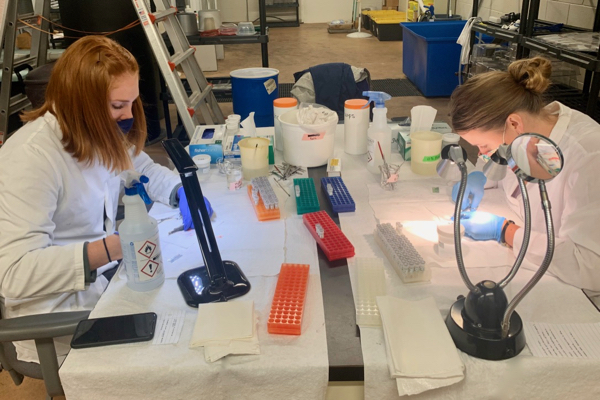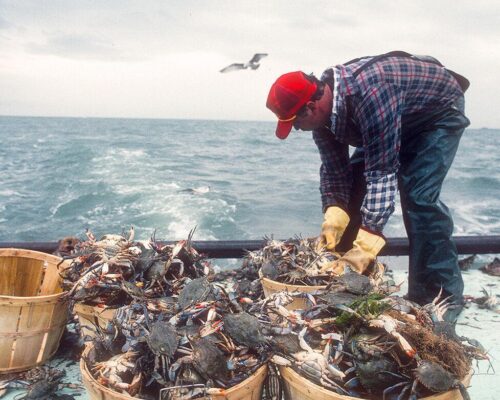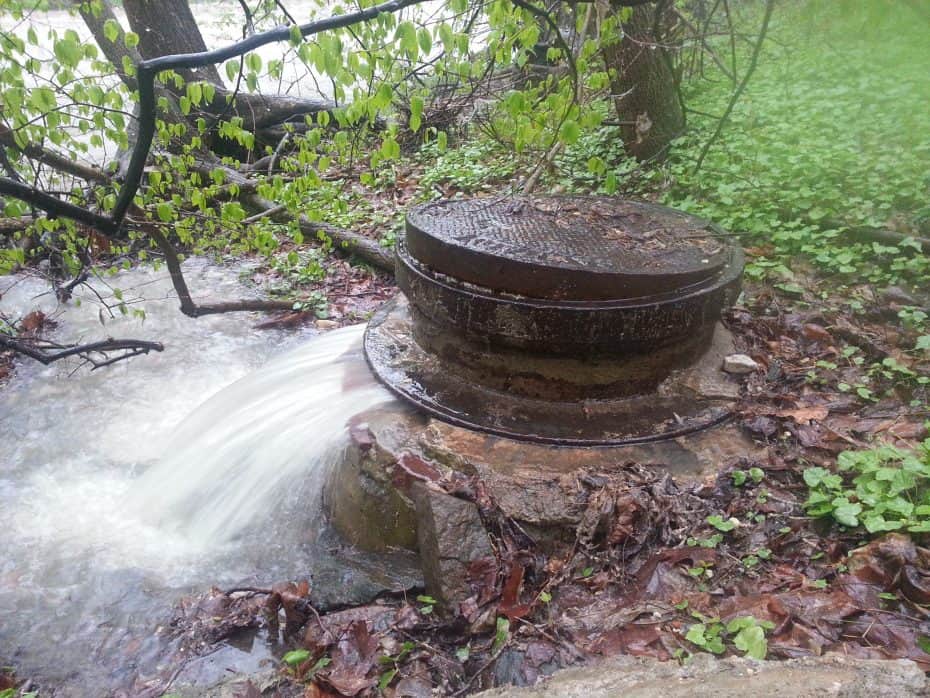Microplastic fragments are becoming an increasing environmental problem in our waterways. They are the tiny particles that weathering creates from Styrofoam cups and plastic bottles, particles that make their way into the Chesapeake Bay. But new research finds their impact on marine life goes even deeper than we thought.
Toxins like microplastics work slowly in fish. But when combined with something like a virus, they can be lethal. A new study published in the journal Science of the Total Environment by toxicologists at the Virginia Institute of Marine Science (VIMS) saw it happen up close. Their lab research showed that certain types of microplastic fragments can cause enough damage to delicate structures like gill membranes to allow viruses to enter more easily.
The lead author, Dr. Meredith Evans Seeley, and several co-authors from VIMS and the College of William & Mary, wondered if the IHN virus, common in salmon and trout farms, would cause more fish to die in water containing plastic fragments than in water containing fragments of natural material like decayed marsh grass.
The team exposed rainbow trout, a common species in Virginia farms, to low, medium, and high concentrations of three different common types of microparticles, and later infected half the tanks with the IHN virus.
The particles came from polystyrene foam, nylon fibers from clothing, and the common plant saltmarsh cordgrass. Control tanks held no virus or microparticles.
“We found that co-exposure to microplastics and virus increased disease severity,” said Dr. Seeley, “with nylon fibers having the greatest impact. This is the first time this interaction has been documented, and emphasizes the importance of testing multiple stressors, which is more environmentally realistic. Nylon microfibers are larger and may be more likely to become trapped in and damage the delicate tissues of the gills and gut lining. That could make it easier for the virus to enter and stress the host.”
While the research speaks directly to the aquaculture industry, it’s also applicable to natural environments like the Bay and its tributaries, VIMS researchers say.
“Disease and microplastics may interact to produce worse outcomes across a range of aquatic and terrestrial systems,” added collaborating VIMS professor Rob Hale, “including in wild fishes, corals, and birds, raising questions far beyond fish farms. If you just test microplastics alone, you might not see any impacts and call it a day, but in the real world those microplastics may interact with pathogens, rising temperatures, decreasing pH, increasing water turbidity, and other variables.”
This research is likely to prompt further study of microplastics and a variety of other contributing factors.
-John Page Williams




